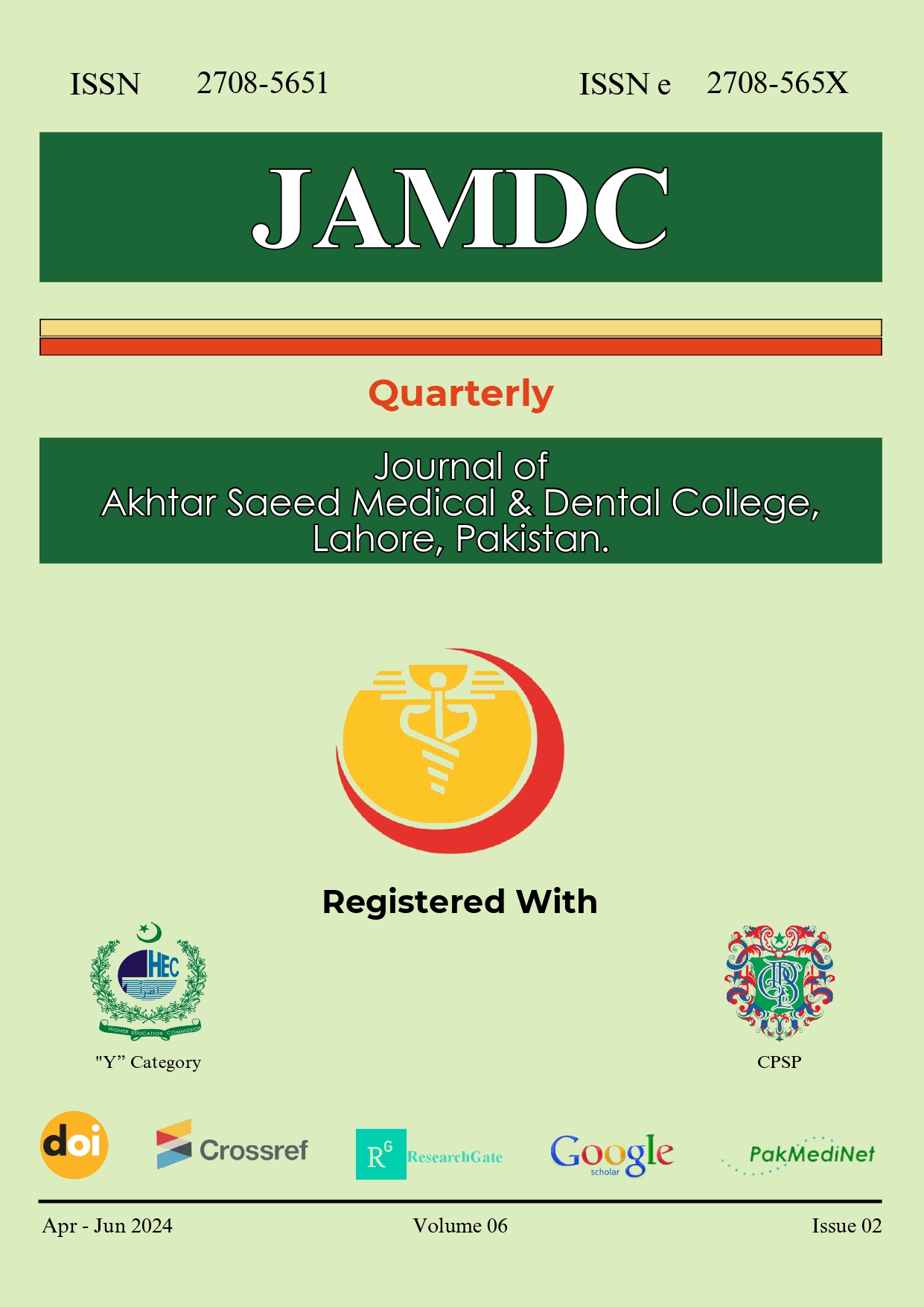Original Article EMERGENCY PERIPARTUM HYSTERECTOMY AND ITS DETERMINANTS IN PATIENTS WITH PLACENTA PREVIA IN A TERTIARY CARE HOSPITAL, MULTAN
Main Article Content
Abstract
Background:
Placenta previa is an obstetric condition characterized by painless vaginal bleeding in the third trimester due to abnormal placentation near or covering the internal cervical os. Full previa occurs when the placenta completely covers the os, while marginal previa is when it is less than 2 cm away. This condition increases the risk of postpartum bleeding and may necessitate emergency hysterectomy, leading to significant maternal and fetal morbidity and mortality.
Material and Methods:
A descriptive case series was conducted in the obstetrics and gynecology department of Multan Medical and Dental College from November 1, 2022, to April 30, 2023, including 171 women with singleton pregnancies, gestational age > 35 weeks, and parity 0-4.
Hysterectomy followed failed postpartum bleeding treatments.
Results:
The study included women aged 20-35 years, with a mean age of 30.356 ± 2.24 years, mean gestational age of 38.309 ± 1.19 weeks, parity 1.848 ± 1.10, weight 71.994 ± 13.27 kg, height 1.566 ± 0.09 meters, and BMI 29.453 ± 5.28 kg/m². Most patients (93%) were aged 28-35 years. Placenta previa grades: I (12.9%), II (65.5%), III (15.2%), IV (6.4%). Previous cesarean section history was 58.5%, with emergency hysterectomy in 14% of patients.
Conclusion:
Placenta previa is no longer a rare obstetric complication. Major risk factor include previous caesarean delivery. Maternal and fetal morbidities and deaths are reduced when aberrant placental invasion is detected early in pregnancy.

